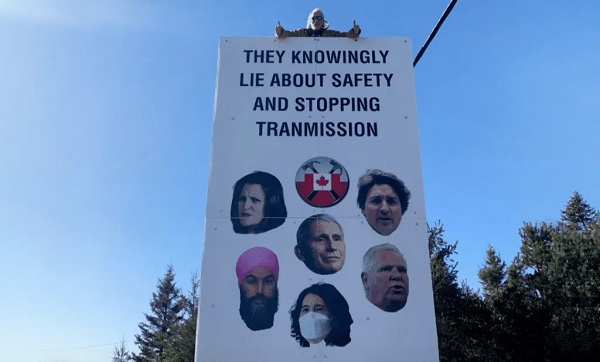International
Trump, Zelensky clash represents seismic shift in world politics
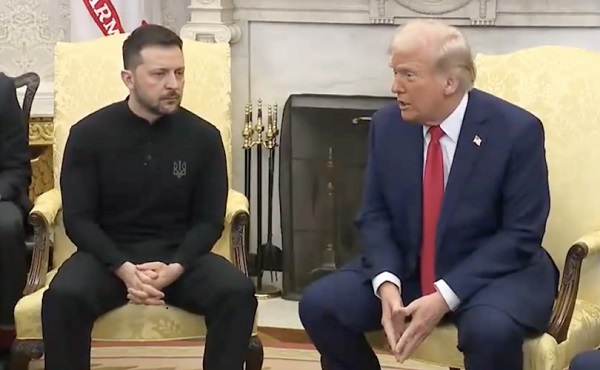
From LifeSiteNews
By Frank Wright
A meeting which began over a mineral deal and peace in Ukraine has developed into a historic shift in world politics.
“You don’t hold the cards,” President Donald Trump told Ukrainian President Volodymyr Zelensky at the White House on February 28.
When Zelensky retorted that he was “not playing,” Trump rebuked him. “Yes. Yes you are. You are gambling with the lives of millions of people.”
In an exchange which reframed the Ukraine war as a reckless gambit towards nuclear Armageddon, both Trump and Vice President JD Vance signaled an epochal shift away from the global consensus of the last forty years – and towards the interests of peace and of the American people.
“You’re gambling with World War III,” Trump continued, explaining to Zelensky that “…what you’re doing is very disrespectful to the country, this country that’s backed you far more than a lot of people say they should have.”
Friday’s White House meeting between the unelected leader of Ukraine is one of several recent visits and follows that of the U.K.’s Keir Starmer and France’s Emmanuel Macron.
Zelensky had nominally arrived to finalize a deal for U.S. rights over Ukrainian minerals, brokered by U.S. Secretary of State Marco Rubio. The deal was seen as a means of the U.S. recovering some of the claimed 350 billion dollars Trump has said that America has supplied to Ukraine in financial and military aid since February 2022.
Instead, Zelensky left immediately after being “kicked out” of the White House, the deal unsigned, and with his planned lunch reportedly “given to the interns” by Trump. Fox News reported White House insiders saying Zelensky was “begging to stay,” as a planned joint press conference was canceled.
Zelensky was congratulated on his “dignity” following the meeting, by the unelected European Union chief Ursula von der Leyen.
Immediate UK summit, ‘boots on the ground?’
Having refused to apologize, Zelensky flew to London for a pre-planned March 1 “summit” of pro-war leaders attended by NATO chief Mark Rutte, EU Chief Commissioner Ursula von der Leyen, U.K. Prime Minister Keir Starmer and the leaders of France, Italy and Poland.
The summit followed a “bizarre” flurry of identical social media posts sent by pro-war European leaders in support of Zelensky.
Statements were made following the meeting which suggested U.K. and EU support for Ukraine could continue in the absence of U.S. involvement – with the U.K. prime minister announcing afterwards that he is “ready to put boots on the ground” in Ukraine.
Starmer went on to announce a further $2.2 billion in “loans” to Ukraine to purchase missiles.
EU plan falls apart
The London Summit claimed to be making progress towards an EU-led ceasefire but concluded with no agreements in place.
Following the claim by France’s Macron that a truce in Ukraine had been proposed, the U.K. Armed Forces minister told Times Radio Monday morning that “No agreement has been made on what a truce looks like.”
Zelensky told U.K. reporters he was now “ready to sign” the minerals deal agreed with Donald Trump.
A further meeting has been scheduled. Following the remarks of the U.K’s Starmer, the leaders of France and Poland announced that neither nation would be sending troops to Ukraine – despite the assurances given by Starmer that a EU and U.K. “coalition of the willing” would do so.
The U.K.’s Ambassador to the U.S., Peter Mandelson, appeared to undermine Starmer’s position, calling for all leaders to give “unequivocal backing” of Trump’s initiative.
As the U.K.’s Daily Telegraph reported that Donald Trump’s meeting with Russian President Putin is being “fast tracked,” news also emerged that Trump is “discussing cutting all military aid to Ukraine,” with the Russians and Hungarians saying “Zelensky does not want peace.”
So severe is the crisis for Zelensky that a former staunch supporter of the proxy war, Senator Lindsey Graham, called for his resignation.
NATO without the US
The U.S. government is pursuing negotiations with the Russians independently of the European and British leadership, whose own summit quietly concluded that any future settlement in Ukraine ultimately relies on the U.S. to guarantee it.
News now emerges that the U.S. is seeking to reopen the NordStream pipelines in direct talks with the Russians.
Missiles fired from Ukraine into Russia rely on U.S.-led satellite intelligence and guidance. There is no realistic chance of unilateral military action in Ukraine by Europe’s depleted and scaled back militaries – a position underlined by EU statements calling for comprehensive rebuilding both of European defence and the industry required to restore it to realistic levels.
The picture emerging is one of a stark reality. There is no NATO absent U.S. commitment, and neither the U.K. nor the EU can act independently of the U.S. to confront a major power.
This too was foreshadowed on February 28, when Donald Trump asked Keir Starmer, “Could you take on Russia by yourselves?”
It is a serious question with an obvious answer, and it was followed by laughter.
Reality has bitten hard this weekend, showing how the U.S. leadership has not merely changed the color of the neckties worn in government, but is pursuing an historic break with decades of U.S. grand strategy.
British commentator Matt Goodwin said that the meeting signified a far wider geopolitical realignment, suggesting the U.K. and European leadership at the London summit had failed to recognize this historic shift.
UKRAINE: One lone European voice explaining how Trump is right. pic.twitter.com/QqcBbCrQGZ
— @amuse (@amuse) March 2, 2025
U.K. and European leaders may continue to generate dramatic headlines with bold talk and unrealistic initiatives, but this too is beginning to resemble an attempt to win a media war whilst the battle in reality is lost to them.
The Trump White House sees the war in Ukraine is seen as a needless waste of human life and money which “should never have happened.” Hungarian President Viktor Orbán also spoke out strongly in favor of peace, adding Ukraine was now in a “dire situation.”
U.S. negotiators now “talk normally” with those of the Russians, after a Biden administration which refused to speak to them at all for several years.
With Trump set to address Congress Tuesday night, an era-defining announcement may be on the cards.
Those cards are clearly held by the United States and no other nation in its sphere of influence. How will those cards be played? An earlier post by Trump on his Truth Social strongly suggests the U.S. will seek to establish and normalize trade with Russia regardless of the liberal-globalist regimes in Europe – all of whose leadership have invested their political fortunes in the war in Ukraine.
“We should spend less time worrying about Putin, and more time worrying about migrant rape gangs, drug lords, murderers, and people from mental institutions entering our Country – So that we don’t end up like Europe!” wrote Trump.
This is a direct hit on the British and European governments whose pursuit of the global consensus has led their nations into chaos. Trump is reshaping the world around the recognition of this reality, and of the ruin it has caused. With Trump, Speaker Mike Johnson and Elon Musk already suggesting an audit of all funding to Ukraine, the card of the severe corruption funded by this war may be played soon.
This moment comes alongside U.S. warnings that the enemy is not outside but within Europe, as its governments suppress free speech and refuse to respect the results of elections. A further scandal looms over how Ukrainian aid was spent, and where the weapons themselves went – with Tucker Carlson and even CBS news reporting that between one and “half” of all military equipment supplied has vanished on to the black market in Ukraine. How far were these pro-war, pro-Zelensky leaders invested in a nation described in the 2021 Pandora Papers as one of the most corrupt in the world?
There are now two visions of the future of the West, and only one has a winning hand. Tomorrow night, perhaps we shall see another Trump card thrown down.
You can watch all 46 minutes of the February 28 meeting between Trump, Vance and Zelensky here.
International
Woman wins settlement after YMCA banned her for complaining about man in girls’ locker room

From LifeSiteNews
Julie Jaman will receive $65,000 as part of the settlement after being banned from a local swimming pool for objecting to a man in a female shower with little girls present
A Washington State grandmother won a $65,000 settlement from the City of Port Townsend and the Olympic Peninsula YMCA after she was banned from a swimming pool for objecting to a cross-dressing man watching small girls change clothes.
As covered by LifeSiteNews in 2022, Julie Jaman testified before the Port Townsend City Council about her experience showering in the local pool’s facilities when she heard “a man’s voice in the women’s dressing area.” When she investigated, she said that she saw “a man in a women’s swimsuit, watching little girls pull down their bathing suits in order to use the toilets in the dressing room.”
She also told a local newspaper, “There were gaps in the curtain and there I was, naked, with soap and water on me, and this guy, right there very close to me. I asked, ‘Do you have a penis?’ He said, ‘That’s none of your business.’ That’s when I told him, ‘Get out of here, right now.” She appealed to a nearby female manager, who she says replied, “you’re discriminating and you can’t use the pool anymore and I’m calling the police.”
After speaking to police and reviewing police reports, the Port Townsend FreePress reported that Jaman had an “emotional response to a strange male being in the bathroom and helping a young girl take off her bathing suit,” and was described as “screaming” by a complainant.
“In an effort by the city and the YMCA to apply the neo-cultural gender rules at Mountain View Pool dressing, shower room facilities, women and children are being put at risk,” Jaman declared at the time.
A YMCA marketing and communications manager responded at the time by disputing her version of events, claiming the male was not “engaging” with the young girls but was simply escorting them to the dressing room, and that the confrontation was just one in a series of many that led to her ban.
She sued, however, and on June 30 the group representing her, the Center for American Liberty (CAL), announced that the city and the YMCA chapter had agreed to a $65,000 settlement, which also provides that the city will “remove certain information about Ms. Jaman from its website, further underscoring the baselessness of the actions taken against her.”
“This case was never just about one woman being banned from a publicly owned pool, it was about the fundamental right of every American to speak truth without fear of retaliation,” said Mark Trammell, CEO of CAL. “Julie Jaman bravely stood her ground, endured attacks on her character, and today’s settlement affirms that government officials cannot silence dissenting voices through intimidation or retribution.”
“I never imagined that expressing concerns about the safety and privacy of women and girls would lead to me being shunned and banned,” Jaman added. “I’m grateful that justice has been served and that my voice was heard. This is a victory for common sense, women’s rights, and the right to speak the truth.”
Despite being demanded by LGBT activists as a matter of “fairness,” policies forcing girls to share intimate facilities such as bathrooms, showers, or changing areas with males who “identify” as the opposite sex violates their privacy rights, subjects them to needless emotional stress, and gives potential male predators a viable pretext to enter female bathrooms or lockers by simply claiming transgender status.
Crime
Bryan Kohberger avoids death penalty in brutal killing of four Idaho students

Quick Hit:
Bryan Kohberger will plead guilty to murdering four Idaho college students, avoiding a death sentence but leaving victims’ families without answers. The plea deal means he’ll spend life in prison without ever explaining why he committed the brutal 2022 killings.
Key Details:
- Kohberger will plead guilty at a hearing scheduled for Wednesday at 11 a.m. local time.
- The plea deal removes the possibility of death by firing squad but ensures life in prison without parole.
- Victims’ families say the state “failed” them by agreeing to a deal that denies them an explanation for the murders.
Diving Deeper:
Bryan Kohberger, a former PhD criminology student at Washington State University, is expected to plead guilty to the November 2022 murders of four University of Idaho students, sparing himself the death penalty but also avoiding any explanation for his motive. Idaho defense attorney Edwina Elcox told the New York Post that under the plea, Kohberger will have to admit to the killings but won’t have to provide a reason for his actions. “There is no requirement that he says why for a plea,” Elcox explained.
Prosecutors reached the plea deal just weeks before the scheduled trial, which many believed would have revealed the full details and motives behind the shocking quadruple homicide. Kohberger is accused of murdering Kaylee Goncalves, 21; Madison Mogen, 21; Ethan Chapin, 20; and Xana Kernodle, 20, with a military-style Ka-Bar knife as they slept in their off-campus home in Moscow, Idaho. His DNA was allegedly found on a knife sheath left at the scene.
The Goncalves family blasted the state for the deal, saying, “They have failed us.” They had hoped a trial would uncover why Kohberger targeted their daughter and her friends. Prosecutors, however, argued that the plea ensures a guaranteed conviction and prevents the years of appeals that typically follow a death sentence, providing a sense of finality and keeping Kohberger out of the community forever.
Sentencing will not take place for several weeks following Wednesday’s hearing, which is expected to last about an hour as the judge confirms the plea agreement is executed properly. While the families may find some closure in knowing Kohberger will never be free again, they are left without the one thing a trial could have provided: answers.
(AP Photo/Matt Rourke, Pool)
-
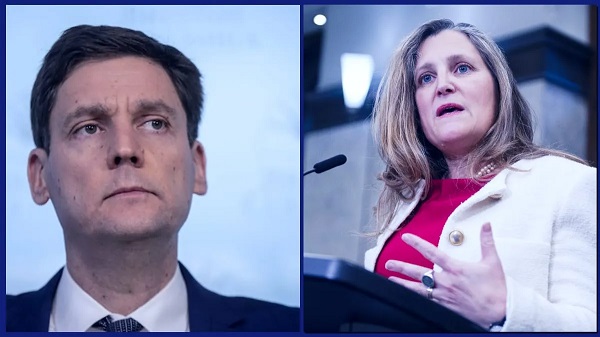
 Business2 days ago
Business2 days agoOttawa Funded the China Ferry Deal—Then Pretended to Oppose It
-

 COVID-192 days ago
COVID-192 days agoNew Peer-Reviewed Study Affirms COVID Vaccines Reduce Fertility
-

 MAiD2 days ago
MAiD2 days agoCanada’s euthanasia regime is not health care, but a death machine for the unwanted
-
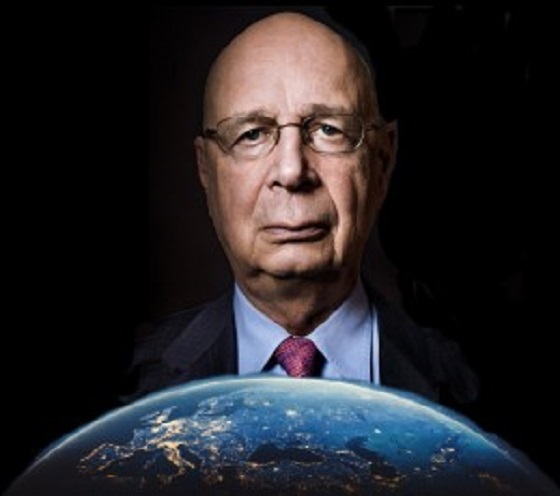
 Business2 days ago
Business2 days agoWorld Economic Forum Aims to Repair Relations with Schwab
-

 Alberta2 days ago
Alberta2 days agoThe permanent CO2 storage site at the end of the Alberta Carbon Trunk Line is just getting started
-

 Alberta2 days ago
Alberta2 days agoAlberta’s government is investing $5 million to help launch the world’s first direct air capture centre at Innisfail
-
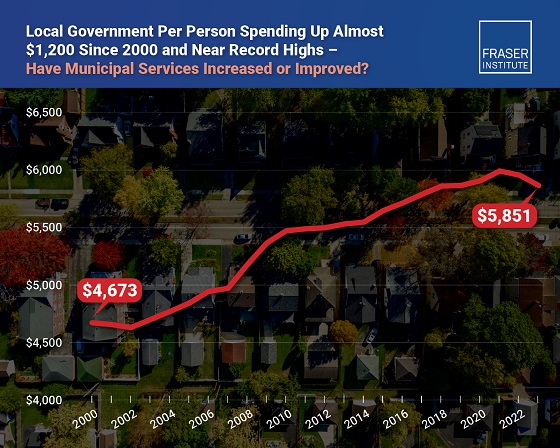
 Business2 days ago
Business2 days agoMunicipal government per-person spending in Canada hit near record levels
-

 Business2 days ago
Business2 days agoA new federal bureaucracy will not deliver the affordable housing Canadians need




